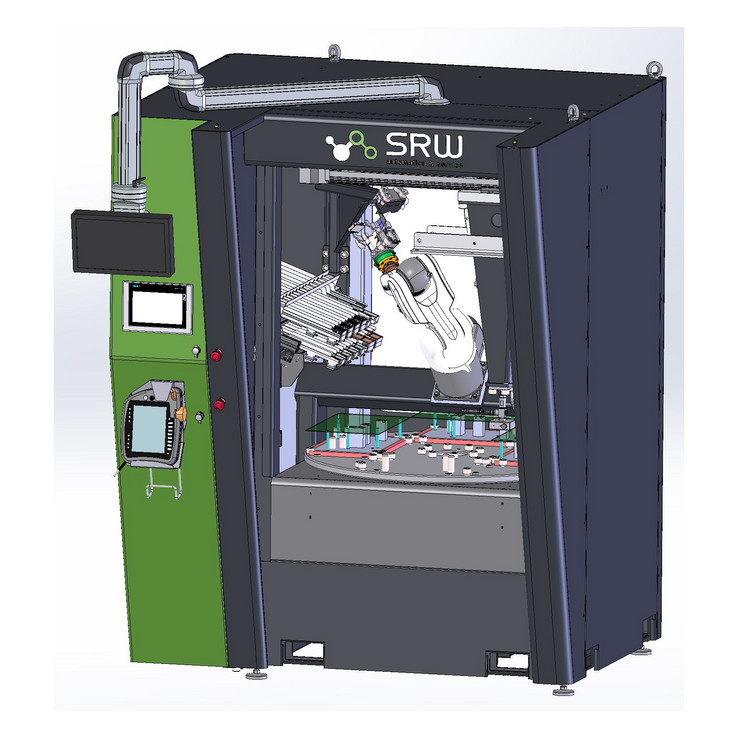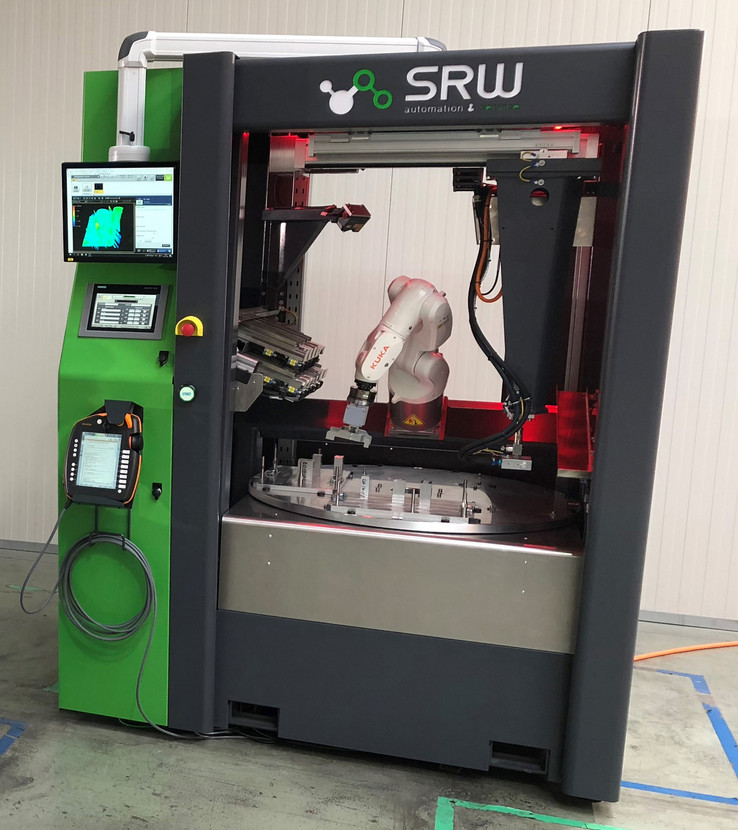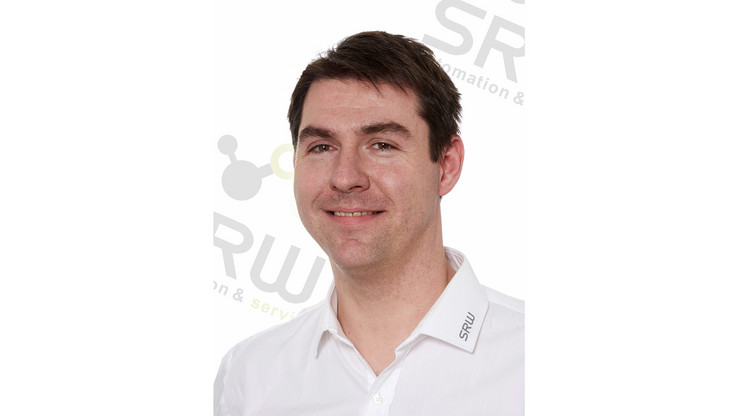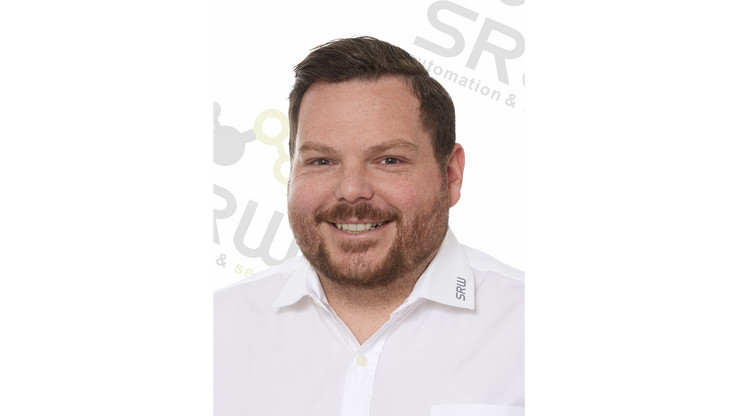The Many Advantages of Function-Oriented Design
Automating for Automation
SRW Automation & Service in Vorchdorf, Austria, develops and produces automated production and assembly units as well as highly automated special-purpose systems. Since its founding, the young company has relied on EPLAN CAE software for its electrical engineering and fluid-power engineering designs. The switch to function-oriented mechatronic development was successfully tested within a customer project and required no additional time expenditures. Since then, SRW has benefitted from significantly accelerated development without any unpleasant surprises.
Production processes have been undergoing radical changes, and not just since the start of the fourth industrial revolution. In order to remain competitive, manufacturing companies are striving to produce increasingly complex products in one go, with short manufacturing cycles and as little human intervention as possible. At the same time, they need to be able to react quickly to changing market conditions in view of increasing product variants and decreasing numbers of units produced. They are therefore increasingly turning to highly automated and extremely flexible systems.
Complete, fully automated solutions
SRW Automation & Service specialises in homogeneous systems for complex manufacturing and assembly tasks. The company, headquartered in Vorchdorf, Austria, focuses on developing and building complete, automated and fully integrated solutions for industrial manufacturing customers. “One of our strengths is our ability to link together different processes and integrate them into cross-machine systems and customer-specific special-purpose systems,” says Andreas Stummer, head of technical sales and project management at SRW. “This ensures that our customers don’t have to deal with the complexity of interlinking these different processes themselves.”
The long list of projects that SRW has realised since its founding in 2016 demonstrates that there is a clear demand for its services. These include fully customised production and assembly units and plant systems for metal casting and synthetic injection moulding, as well as for the automation of CNC machining centres. “I attribute our rapid growth to our flexibility as well as the quality of our consulting, solutions and implementation,” Andreas Stummer explains. “With a high level of innovation through continuous technology monitoring, we can recommend things to our customers that they themselves aren’t even aware of yet.”
In addition, SRW builds a complete digital twin for each customer project. This helps avoid misunderstandings and minimises risks from the quotation phase to virtual commissioning to production simulation.

SRW builds a complete digital twin for each customer project. The assembly system led the transition to function-oriented mechatronic development across all engineering disciplines.
Function-oriented mechatronic design
SRW system designers have been using EPLAN Electric P8 and EPLAN Fluid since day one. “In the early days we worked with schematics and control cabinet construction in the traditional way – with location codes, code letters and counters,” recalls Christoph Quatember, one of the two specialists in this area at the company. “We had known for some time that this software also enabled function-oriented development, which is a much better fit for the mechatronic nature of the systems we produce.”
However, the constant time pressures initially prevented a changeover to the interdisciplinary, uniform method. That changed abruptly when a customer’s specifications required that consistent mechatronic, function-oriented development methods be used. The semi-automatic system, which also allows for simple operator intervention, is an assembly machine. A robot places power semiconductor modules with 24 to 50 pins in the corresponding contact sockets on a printed circuit board and presses them into place. Since the system manufactures assemblies of different sizes, a rotary table is used to feed four differently sized printed circuit boards.
To correctly position each module, a camera reads the QR code of each component, measures the position and orientation of the pins, and checks that the thermal glue has been applied correctly to the appropriate circuit board. “The customer recognised that a uniform designation scheme for mechanics, electronics and PLC programming would greatly simplify troubleshooting and servicing,” Andreas Stummer recalls. “Furthermore, he hoped that this would also speed up and simplify any subsequent changes, additions or expansions to the system.”
Quick and easy transition
Changing over to a uniform logic for all development disciplines initially requires a certain amount of effort. Functional units with different characteristics in terms of size, performance or speed must be defined in coordination with mechanical design and PLC programming. This also includes the integration of safety-related components that will later be part of a safety solution for the entire system. It is also important to create a factory standard with uniform designation schemes. “What helped us in this area was the ability to prepare macro projects in EPLAN and use them to automatically generate the schematics for the entire system,” say Christoph Quatember, visibly pleased about this. “With EPLAN Electric P8 and EPLAN Fluid, we were able to complete the transition entirely within the project development phase and finish it in just one month.”

SRW Automation & Service in Vorchdorf develops and produces customised casting and machining units as well as fully customised special-purpose machines, such as this assembly system for the electronics industry. All images: SRW ©
Great benefits for follow-up projects
Despite the necessary changes, the function-oriented electrical and fluid design did not take any longer than the conventional method. It was therefore already cost-neutral for this first customer project. At the same time, the foundation was laid for a modular system that covers around 75 per cent of the required functions. “The change in methodology will bring lasting benefits in engineering for all future projects,” Andreas Stummer says with conviction. “System-oriented, mechatronic development greatly reduces the time and effort required for coordinating with other disciplines, thereby significantly accelerating development.” Christoph Quatember adds, “The creation of assemblies through configuration brings enormous acceleration, and the use of tested macros and parameter sets helps us avoid any unpleasant surprises. In the first follow-up project for a CNC machining unit with over 100 drives, the time savings in designing the electrical engineering amounted to more than 50 per cent.”

SRW Automation & Service Head of Electrical and Safety Engineering Christoph Quatember: “In a recently completed project with over 100 drives, the function-oriented design using EPLAN Electric P8 and EPLAN Fluid resulted in time savings of more than 50 per cent compared to the previous approach.”

SRW Automation & Service Head of Technical Sales and Project Management Andreas Stummer: “System-oriented, mechatronic development greatly reduces the time and effort required for coordinating with other disciplines, thereby significantly accelerating development.”
User
SRW Automation & Service, founded in Vorchdorf, Austria in 2016, develops and produces special-purpose machines and automation solutions for industrial manufacturing companies. Its focus is on the automation of die casting, injection moulding and machine tools, as well as special solutions in the field of manufacturing and assembly automation.


